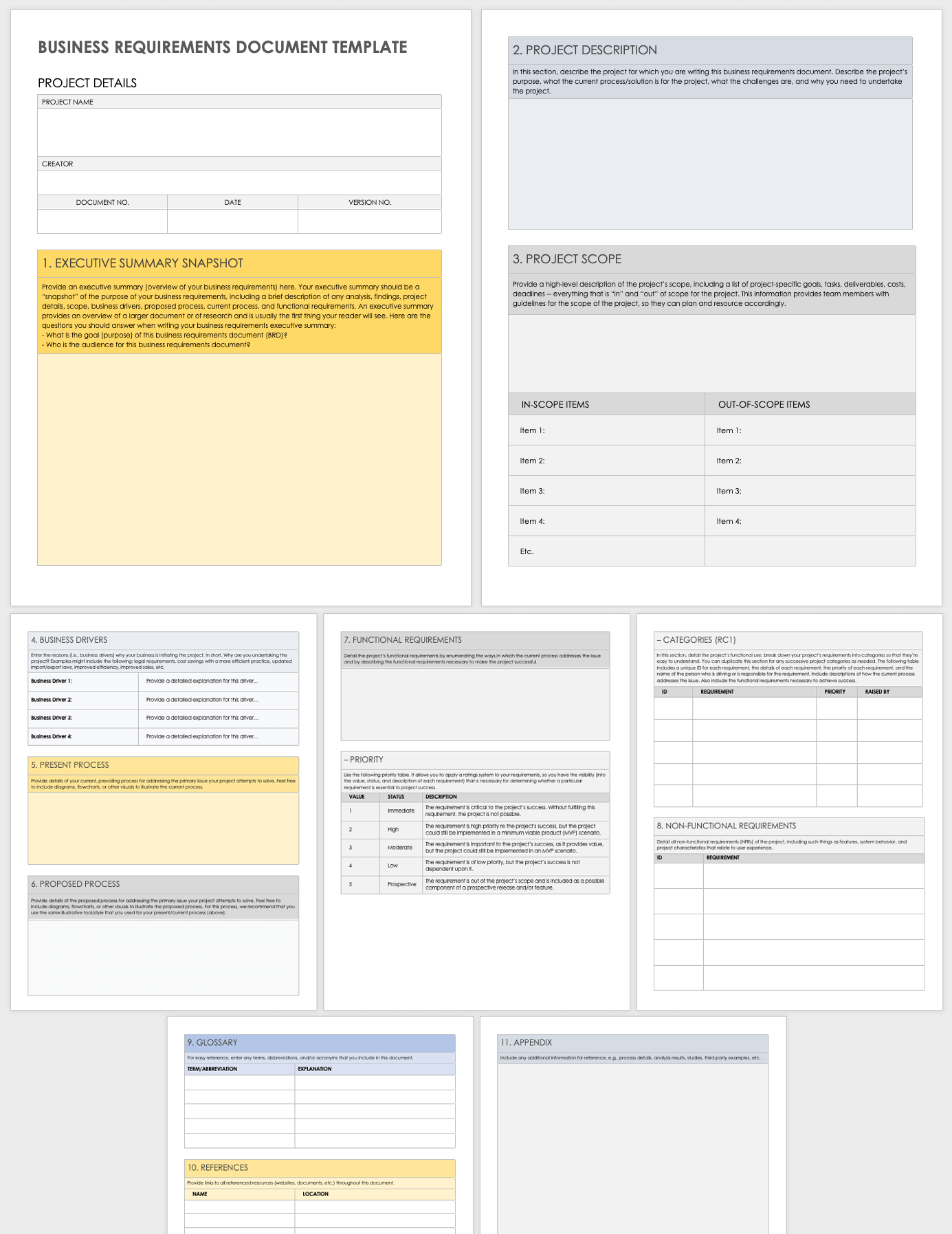A Business Analyst (BA) Requirements Document Template is a structured document that captures the functional and non-functional specifications of a project. It serves as a blueprint for the development team, outlining the expectations, behaviors, and outcomes of the software or system being developed.
Creating a comprehensive BA Requirements Document Template is crucial for ensuring that the project meets stakeholder needs and aligns with business objectives. It helps in organizing and communicating requirements, reducing the risk of misinterpretations and misunderstandings during the development process.

Elements of a Comprehensive BA Requirements Document Template
A BA Requirements Document Template typically includes the following key elements:
- Introduction: Provides an overview of the project, its scope, and the purpose of the document.
- Stakeholder Analysis: Identifies the stakeholders involved in the project and their roles and responsibilities.
- Business Objectives: Outlines the business goals that the project aims to achieve.
- Functional Requirements: Specifies the specific functions and features that the software or system must provide.
- Non-Functional Requirements: Describes the quality attributes of the system, such as performance, security, usability, and reliability.
- Glossary: Defines any technical terms or abbreviations used in the document.
- Appendix: Includes supporting documentation, such as use cases, user stories, or wireframes.
A well-structured BA Requirements Document Template ensures that all relevant requirements are captured and documented, reducing the likelihood of omissions or errors. It fosters collaboration between the business and technical teams, enhancing the overall efficiency and success of the project.
Benefits of Using a BA Requirements Document Template
- Clarity and Consistency: A BA Requirements Document Template establishes a standard format for documenting requirements, reducing ambiguity and misinterpretations.
- Reduced Risk: By capturing all requirements upfront, it helps identify and mitigate potential risks early in the development process.
- Improved Communication: It serves as a centralized repository for requirements, facilitating effective communication among stakeholders.
- Enhanced Traceability: The template allows for easy traceability of requirements throughout the project lifecycle, making it easier to manage changes and updates.
- Time and Cost Savings: Using a BA Requirements Document Template streamlines the requirements gathering and analysis process, resulting in time and cost savings.
Conclusion
A BA Requirements Document Template is an indispensable tool for Business Analysts and project teams. It ensures that the requirements are clearly defined, well-organized, and effectively communicated. By adopting a structured approach to requirements management, organizations can significantly improve project outcomes and deliver solutions that meet business expectations.
Investing in a comprehensive BA Requirements Document Template empowers teams to build high-quality software or systems that align with strategic objectives and deliver tangible value to users.

